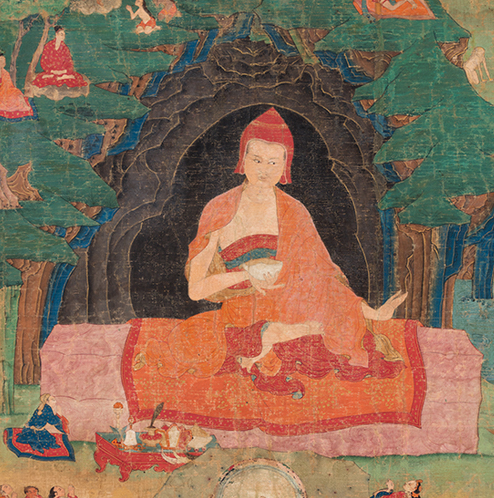
Theme: Change
Change can present difficulties, but it also presents new opportunities. Inspired by the legendary Buddhist figure Padmasambhava, who was known to take many different forms to adapt to challenges, Kate Johnson discusses how meditation can help us observe change and respond with clarity and purpose.
About the Meditation
Meditation session led by Kate Johnson. The guided meditation begins at 10:30.
For centuries Himalayan practitioners have used meditation to quiet the mind, open the heart, calm the nervous system, and increase focus. Now Western scientists, business leaders, and the secular world have embraced meditation as a vital tool for brain health.
Whether you’re a beginner, a dabbler, or a skilled meditator seeking the company of others, join expert teachers in a forty-five-minute weekly program designed to fit into your lunch break. Each session will be inspired by a different work of art from the Rubin Museum’s collection and will include an opening talk, a twenty-minute sitting session, and a closing discussion. Chairs will be provided.
Presented in partnership with Sharon Salzberg and the Interdependence Project. This program is supported in part by the Hemera Foundation.


RELATED ARTWORK

Above is an image of the great Indian saint Padmasambhava holding a human skull cup. He appears in the form of a pandita (Indian scholar) in this image, displaying his mastery of classic Buddhist thought. This form of Padmasambhava is named Pema Jugne. Padmasambhava had the ability to change his forms to adapt to any situation. He took this pandita form when he first met the king of Tibet, Trisong Detsen. The Tibetan king refused to bow to the Buddhist master, so Pema Jugne shot flames out of his fingers, making the king duck and bow down to him, a symbolic gesture of Tibet’s change to a Buddhist country.
About the Speaker

Kate Johnson works at the intersections of spiritual practice, social action, and creative expression. She teaches mindful yoga in NYC public schools, teaches Buddhist meditation at the Interdependence Project, and facilitates an embodied approach to organizational and leadership development for social change agents and communities. Johnson holds a BFA in dance from the Alvin Ailey School/Fordham University and a MA in performance studies from NYU. She has trained at Spirit Rock Meditation Center, the Interdependence Project, Laughing Lotus Yoga, and the Presencing Institute. She is working on a book about waking up to power and oppression as a spiritual practice, to be published by Parallax Press.
